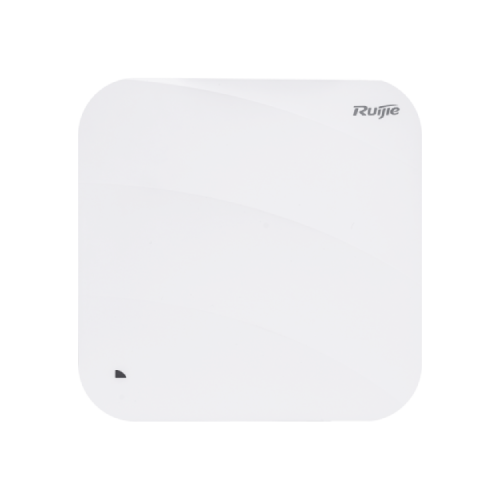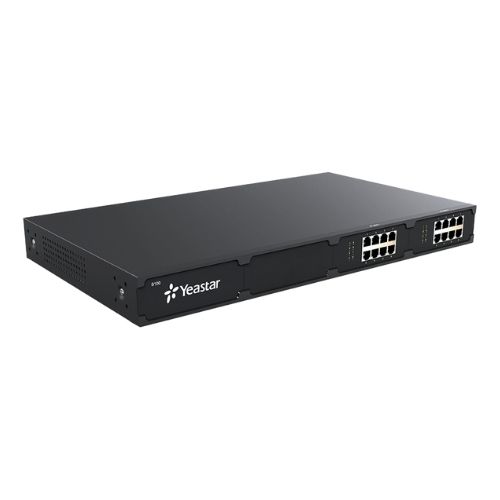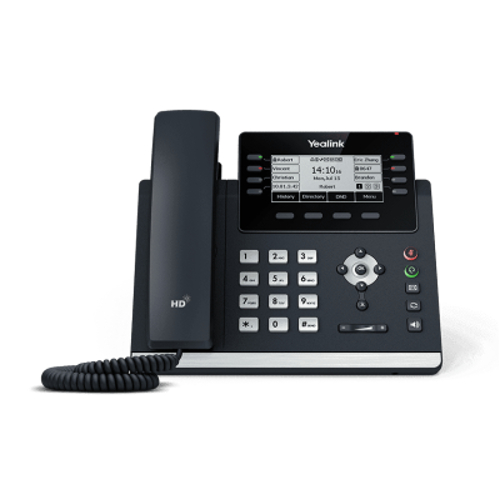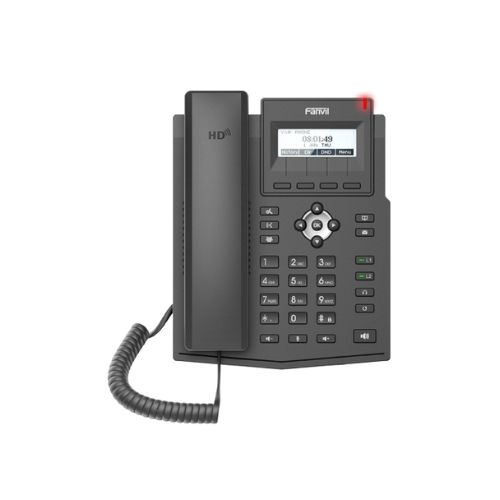Description
Highlight Features
- 5G optical port and 5G electrical port for flexible networking
- Upgraded to Wi-Fi 6, a combined data rate of up to 8642 Mbps
- Al radio for intelligent guidance of STA roaming, ensuring service continuity
- Independent Al Radio for security protection, delivering better experiences and higher security
- Unified WIS cloud management, intelligent O&M
Specifications
Hardware Specifications
| Dimensions and Weight | RG-AP880-AR |
| Physical Dimensions
(W × D × H) |
230 mm × 230 mm × 51 mm |
| Weight | Main unit: 1.0 kg
Bracket: 0.1 kg |
| Installation | Ceiling/wall-mountable |
| Lock Option | Kensington lock and security latch |
| Radio Specifications | RG-AP880-AR |
| Radio Design | Quad-radio design, including one AI radio that can switch between the 2.4 GHz and 5 GHz frequency bands.
Up to 10 patial streams; Radio1: 2.4 GHz: 2 spatial streams, 2 × 2 MIMO Radio 2: 5 GHz: 2 spatial streams, 2 × 2 MU-MIMO Radio 3: 5 GHz: 4 spatial streams, 4 × 4 MU-MIMO Radio 4: 2.4 GHz/5 GHz: 2 spatial streams, 2 × 2 MU-MIMO |
| Operating Frequencies | IEEE 802.11b/g/n/ax: 2.4 GHz to 2.4835 GHz
IEEE 802.11a/n/ac/ax: 5.150 GHz to 5.350 GHz, 5.725 GHz to 5.850 GHz (Note: The operating band varies in different countries.) |
| Data Rate | Radio 1: 2.4 GHz, 575 Mbps
Radio 2: 5 GHz, 2.4 Gbps Radio 3: 5 GHz, 4.8 Gbps Radio 4: 2.4 GHz/5 GHz, 300 Mbps/867 Mbps Maximum wireless rate of the AP: 2.4 GHz + 5 GHz + 5 GHz + 2.4 GHz, 8.075 Gbps 2.4 GHz + 5 GHz + 5 GHz + 5 GHz, 8.642 Gbps |
| Antenna Type | Built-in smart antenna |
| Antenna Gain | 2.4 GHz: 3 dBi
5 GHz: 3 dBi |
| Max. Transmit Power | 20 dBm
(Note: The transmit power varies based on the regulations in different countries and regions.) |
| Power Adjustment | Configurable in increments of 1 dBm |
| Modulation | 802.11b: BPSK, QPSK, CCK
802.11a/g/n: BPSK, QPSK, 16-QAM, 64-QAM 802.11ac: BPSK, QPSK, 16-QAM, 64-QAM, 256-QAM 802.11ax: BPSK, QPSK, 16-QAM, 64-QAM, 256-QAM, 1024-QAM |
| Receiver
Sensitivity |
IEEE 802.11b: –96 dBm (1 Mbps), –93 dBm (5 Mbps), –89 dBm (11 Mbps)
IEEE 802.11a/g: –91 dBm (6 Mbps), –85 dBm (24 Mbps), –80 dBm (36 Mbps), –74 dBm (54 Mbps) IEEE 802.11n: –90 dBm@MCS0, –70 dBm@MCS7, –89 dBm@MCS8, –68 dBm@MCS15 IEEE 802.11ac: HT20: –88 dBm (MCS0), –63 dBm (MCS9) IEEE 802.11ac: HT40: –85 dBm (MCS0), –60 dBm (MCS9) IEEE 802.11ac: HT80: –82 dBm (MCS0), –57 dBm (MCS9) IEEE 802.11ax: HE80: –82 dBm (MCS0), –57 dBm (MCS9), –52 dBm (MCS11) IEEE 802.11ax: HE160: –79 dBm (MCS0), –53 dBm (MCS9), –50 dBm (MCS11) |
| Item | RG-AP880-AR |
| Bluetooth | Bluetooth 5.1 |
| USB Port | USB 3.0 |
| Fixed Service Port | One 100/1000/2500/5000Base-T Ethernet port with auto-neogitiation, IEEE 802.3af/802.3at/802.3bt-compliant
One 5GE SFP port, compatible with 1GE and 2.5GE SFP modules One 10/100/1000Base-T Ethernet port with auto-neogitiation, supplying power to IoT modules (48 V/12.95 W) |
| Fixed Management Port | One RJ45 console port |
| Status LED | One system status LED |
| Button | One reset button |
| Power Supply and Consumption | RG-AP880-AR |
| Input Power Requirements | DC input: 54 V/1.1 A
PoE/PoE+/PoE++ (IEEE 802.3af/at/bt-compliant) Note: If IEEE 802.3at-compliant PoE is adopted, the AP can be normally powered on, but AI Radio is disabled, and the downlink port and USB port cannot supply power to external devices. |
| Power Supply to External Device | Supported, supplying power to IoT modules through the PoE-capable Ethernet port |
| Max. Power Consumption | 40 W |
| Environment and Reliability | RG-AP880-AR |
| Temperature | Operating temperature: –10°C to +50°C (14°F to 122°F)
Storage temperature: –40°C to +70°C (–40°F to +158°F) At a height between 3000 m (9842.52 ft.) to 5000 m (16404.20 ft.) above the sea level, every time the altitude increases by 220 m (721.78 ft.), the maximum temperature decreases by 1°C (1.8°F). |
| Humidity | Operating humidity: 5%RH to 95%RH (non-condensing)
Storage humidity: 5%RH to 95%RH (non-condensing) |
| Safety Standard | GB 4943.1, IEC 62368-1 |
| EMC Standard | EN300386, GB19286, GB17618 |
| Software Specifications | RG-AP880-AR |
| WLAN Functions | Maximum number of connected STAs: 1552
SSID hiding Separate authentication mode, encryption mechanism, and VLAN attributes for each SSID Remote Intelligent Perception Technology (RIPT) Intelligent terminal recognition technology Intelligent load balancing based on terminal quantity or traffic STA limit ● SSID-based STA limit ● Radio card-based STA limit Bandwidth limit: STA/SSID/AP-based rate limit Fat/Fit mode switching: ● When the device works in fit mode, it can be switched to fat mode via an AC. ● When the device works in fat mode, it can be switched to fit mode through the local console port or Telnet mode. |
| Security | PSK and web authentication
Data encryption: WEP (64/128-bit), WPA (TKIP), WPA-PSK, WPA2 (AES), WPA3 WeChat-based authentication QR code-based visitor authentication SM-based authentication MAB authentication Data frame filtering: whitelist, static blacklist, dynamic blacklist User isolation Rogue AP detection and containment Dynamic ACL assignment Remote authentication dial in user service (RADIUS) CPU Protect Policy (CPP) Network Foundation Protection Policy (NFPP) |
| Routing Switching | IPv4 features: static IPv4 address and dynamic IPv4 address obtained via DHCP
Multicast-to-unicast conversion PPPoE client IPSec VPN FTP ALG/DNS ALG |
| Management and Maintenance | Network management via Telnet or TFTP
Web-based management Wireless positioning: RBIS Wireless marketing: WMC/MCP Fault detection and alarm Information statistics and logs |




